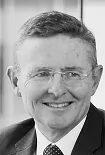The Australian Renewable Energy Agency (ARENA) recently released its investment plan and 'investment priorities' for the next year which importantly will underpin part of the merit assessment for its funding programs.
Two of those priorities particularly will be of interest to traditional mining clients seeking opportunities in or diversification through renewable energy projects – those are:
- improving energy productivity – by way of example, 'application of energy productivity and renewables to displace diesel in mining', and
- exporting renewable energy – 'using renewable energy to power the extraction, refining and export of minerals (such as iron ore and aluminium) and ores (such as lithium and precious metals)'.
While a relative newcomer to the international renewable energy market, Australia is currently receiving significant investment attention and interest as part of a longer term national shift from fossil fuel generation to other energy sources. That interest is not limited though to new and existing renewable energy investment and there are some recent examples of the Australian mining community embracing innovative renewable energy investment alongside their traditional operations.
Australian opportunities taken to date include Rio Tinto's 6.7MW solar photovoltaic (PV) Weipa Solar Farm, supplied and owned by First Solar (Australia) Pty Ltd.
This system connects to Rio Tinto's mini grid and delivers electricity in accordance with a 15 year Purchase Power Agreement (PPA). ARENA described this project as the first application of renewable energy to power critical mining operations in a remote location and without access to Australia's main electricity grids.
The two stages of this project secured $3.5 million and $7.8 million in ARENA funding respectively in accordance with the Regional Australia Renewables Program, representing just under 50 percent of the estimated total project cost of $23.4 million. It is understood that during the day, electricity generated by Stage One of the solar farm offsets up to 600,000 litres of diesel each year that would otherwise have been required to fuel Rio Tinto's 26MW power station.
While stage two of the Weipa solar project has yet to be committed to, Rio Tinto is also building their new Amrun bauxite mine, to the south of Weipa. Although the construction project is using diesel generation, we understand that Amrun is 'solar ready'.
Building on the Rio Tinto experience, ARENA then partnered with Sandfire Resources and McCullough Robertson client Neoen Australia for a solar plant at the De Grussa copper-gold mine 900 km north of Perth.
Comprising a larger 10.6MW solar PV farm and 4MW of battery storage, it is understood to be a $40m project with ARENA contributing $21 million. Neoen is the owner of the plant which is integrated with the existing 19MW diesel plant. Importantly, the solar plant is able to power all of the De Grussa solar mine's day time power needs.
These two projects highlight the opportunities for developing and operating renewable energy systems in remote off-grid energy locations and the economic benefits that are possible.
Attracting the attention of the world's largest diversified resources company, BHP, is a world first solar project in far North Queensland testing the case for 'grid to islanding' functionality.
The Lakeland Solar and Storage Project will feature the first large scale battery storage connected to a fringe grid solar project, which in effect means the battery is charged by solar. Costing $42.5 million, the project will have a capacity of generating 13MW which is equivalent to powering 3,000 homes.
It is expected that the town of Lakeland (some 80 km south west of Cooktown) could be powered by battery for up to 5 hours in event of power failure and will feed into the neighbouring Lakeland substation on the National Electricity Market (NEM), located more than 1,200 km from the nearest large scale power plant.
The project is understood to be at commissioning stage prior to connection to the grid.
ARENA has invested $17.4 million into this significant project and is hopeful that the 'islanding' technology can be rolled out in other remote and regional areas.
In 2016 BHP joined a 'knowledge sharing' steering committee for the project. BHP's interest is to gain valuable insights into the potential for solar and storage to assist its remote operations.
These innovative Australian projects however are not isolated from an international perspective. The Sunshine for Mines Program (SFM) out of the Rocky Mountains Institute in the USA particularly aims to provide and scale on-site renewable energy at mining operations around the world by integrating into power systems of on and off grid mines around the world.
According to SFM, 'Solar PV' is rapidly becoming more cost effective both for remote off grid mines operating diesel generators and for many grid-tied mines. Installing solar at mines reduces carbon emissions and demonstrates sustainable mining practices.
SFM currently has two established case studies, a gold fields mine in South Africa and a mine in Argentina, as well as a conceptual study to identify challenges in pursuing zero carbon for off-grid mines.
While solar projects are certainly being pursued alongside traditional mining operations, another McCullough Robertson client Genex Power took the unique investment opportunity to acquire the historical Kidston Gold mine in North Queensland, 270 km north west of Townsville, to give effect to its vision for so-called pumped hydro power generation. This project has been designed to support some 1,500MWh of continuous power through releasing water between closed loop upper and lower reservoirs to generate 250MW of peaking power over a six hour period, supplied into the NEM.
Significantly, stage one of this project has attracted $54 million of project finance from the Clean Energy Finance Corporation and $9 million in grant funding from ARENA.
Pumped hydro has won favour with the Prime Minister, with ARENA funding feasibility studies for both Snowy Hydro 2.0 and for an expansion of hydro power output in Tasmania. In Queensland the State government is a big supporter of the Genex Kidston project and has just announced a feasibility study to assess further pumped hydro options. There may well be other suitable pumped hydro sites at former or even current mining operations.
In Townsville, zinc refiner Sun Metals has decided to take action to better control their long-term power costs and their exposure to power price volatility by investing $200 million in a 116MW solar farm to satisfy about one-third of their power needs. Construction is now underway. In about 12 months' time, Sun Metals will be, to use ARENA's terminology, 'exporting renewable energy.'
Separately (but not insignificantly), Adani, which is best known for its Carmichael coal project in the Galilee Basin, announced in late 2016 that in addition to wanting to be the biggest renewable energy provider in India, it has substantial aspirations for the Australian market. Adani has kick started 2017 with two solar projects in the mix, one near Moranbah in Queensland and the other at Whyalla in South Australia. While it is currently unknown whether Adani would seek to install solar energy capability at its Carmichael mine, it has both the experience and commitment to pursue alternative energy solutions. Solar power for an operating coal mine may have once seemed pie-in-the-sky, but it is now front and centre of ARENA's investment strategy.
While only a handful of these projects are currently known of in the public domain, McCullough Robertson is aware of some significant but early stage proposals for more of these 'hybrid energy' projects to kick off and given ARENA's focus and the prospect of diversifying the return on investment or production cost of their existing projects, we expect to see a lot more mining companies pursue this strategy.
The Queensland Government has announced it will commence in the second half of 2017 a reverse auction process for up to 400MW of renewable capacity including a specific process to secure 100MW of energy storage. Mine operators should consider the Rio Tinto Weipa and Sandfire De Grussa mine precedents, the potential of ARENA (and CEFC) support and the state's mooted reverse auction process as reasons to consider whether renewable energy may have the potential to be part of their energy mix.
If the Federal government adopts the Finkel Blueprint recommendations, renewable energy projects will gather further momentum. Modelling completed for the Finkel Review suggests that adoption of a Clean Energy Target (see our previous alert: Blueprint for future energy security and transition to cleaner energy mix) or an Emissions Intensity Scheme would see renewable energy accounting for 42 percent of electricity generation sent out by 2030.
Project proponents will want to take into account the Finkel Blueprint recommendation that new generation projects must have fast frequency response (FFR) capability (which essentially means battery or pumped hydro storage). Further clarity will be needed on the treatment of projects that are off-grid or which are connected but consume most of their power in their own operations. Finkel is not convinced that a market for FFR is justified but in the medium term it makes more sense to move to a market-based approach where a renewable energy project proponent could source their FFR from one of the many storage providers now emerging in the Australian market.
For those miners seeking to pursue these types of investments/projects, the following is a list of some of the considerations out of those projects undertaken to date:
- mine or project mine life,
- ARENA and CEFC interest/support,
- an investor/operator to put equity into the project (such as First Solar at Weipa and Neoen at De Grussa),
- ability to offer or source a PPA for a length of time attractive to investors,
- grid connectability and reliability,
- the economics of battery storage (proposed to be part of Stage Two for Weipa but there from day one at De Grussa),
- coordination with existing production or development of mining operations,
- economic factors including diesel pricing fluctuations and future carbon policies,
- irradiation and wind patterns,
- development approvals, and
- local community, Council and landholder support.
We would like to acknowledge the contributions of Strategic Adviser Michael Roche.
The content of this article is intended to provide a general guide to the subject matter. Specialist advice should be sought about your specific circumstances.






